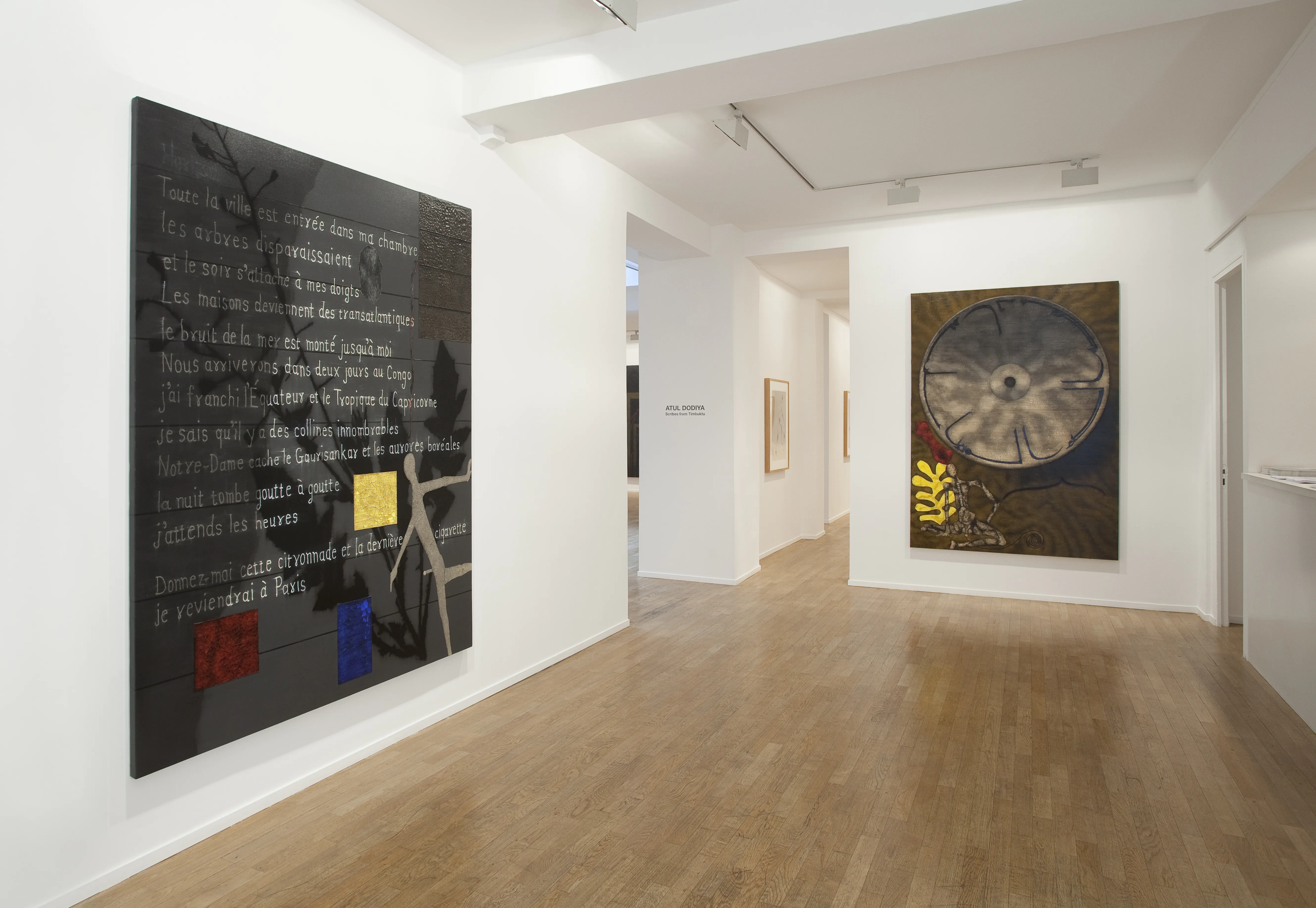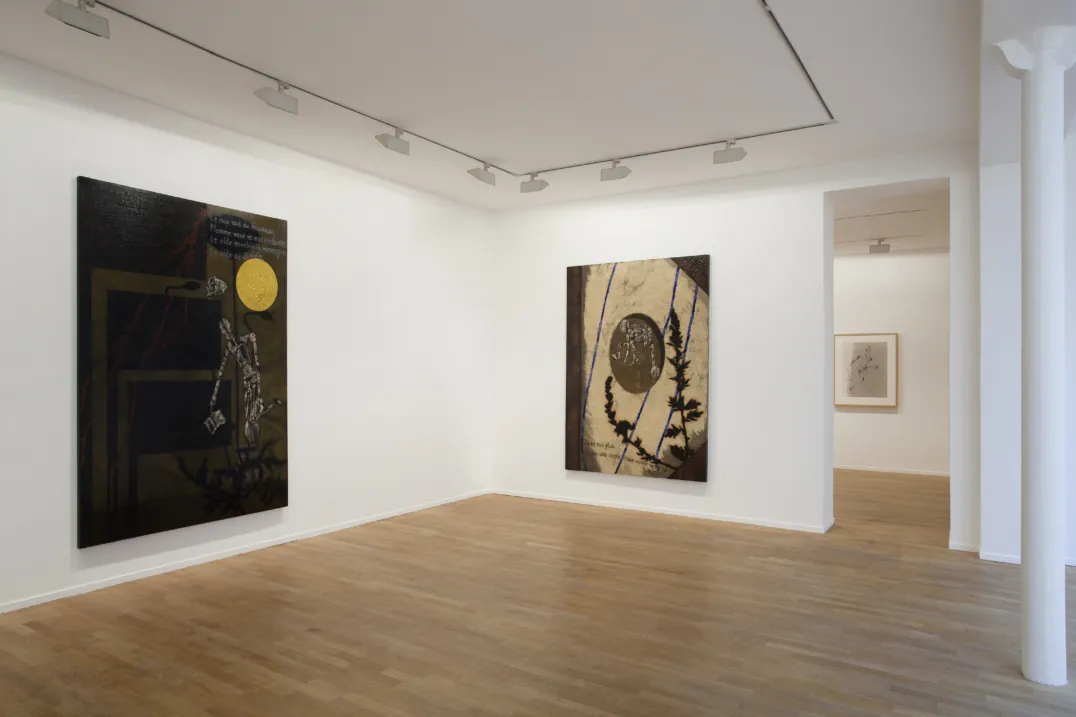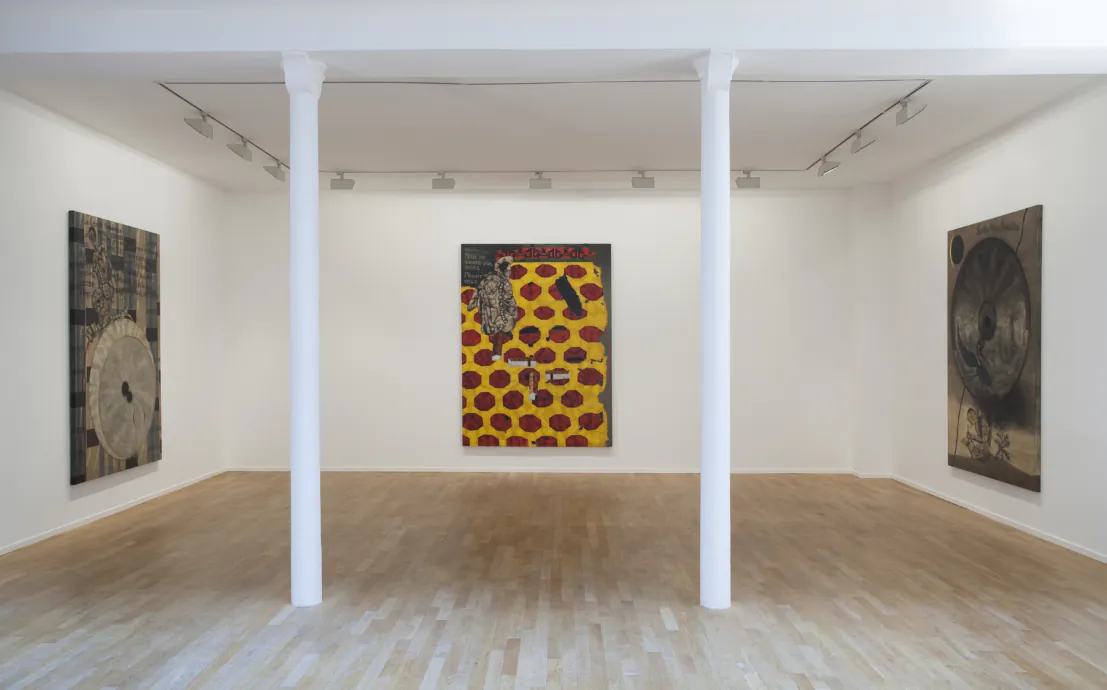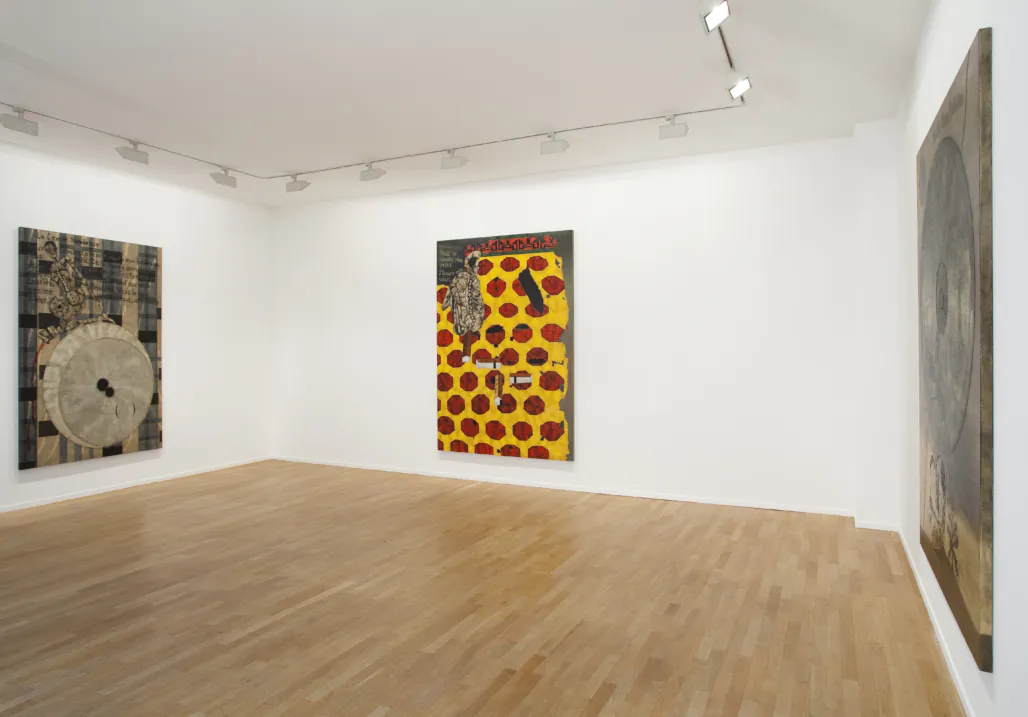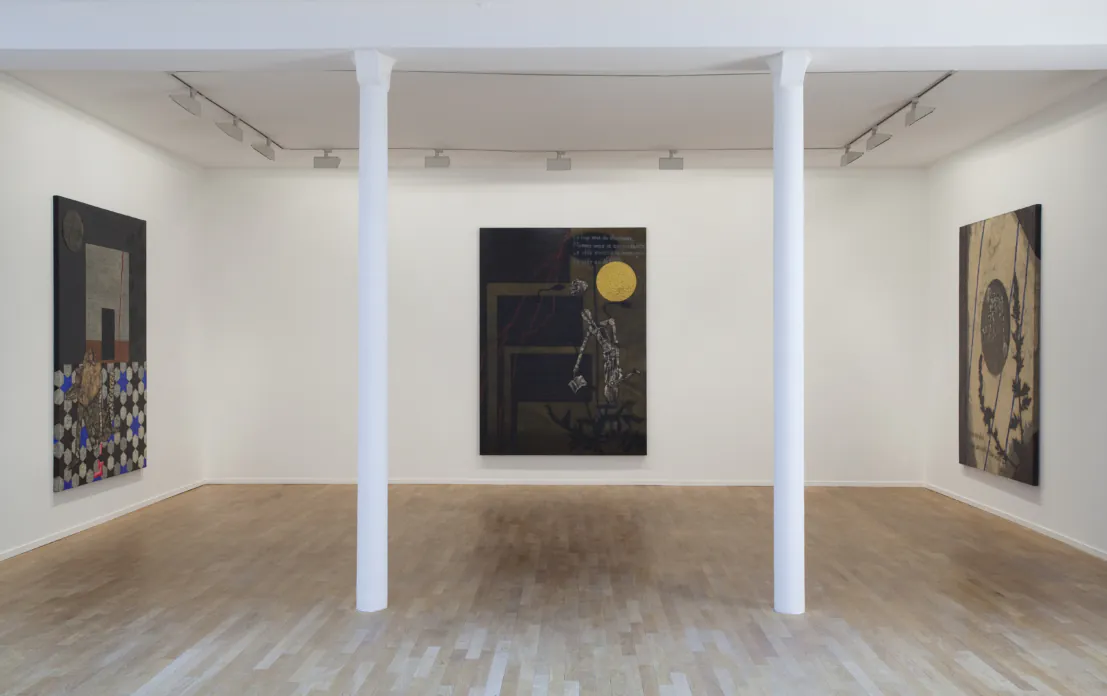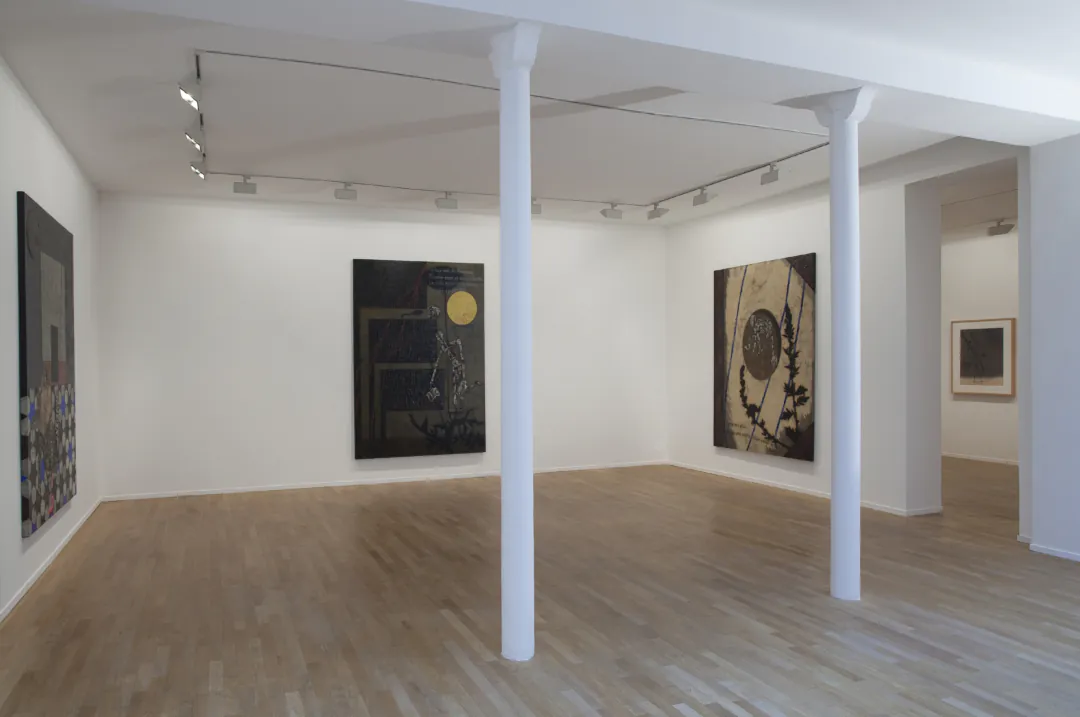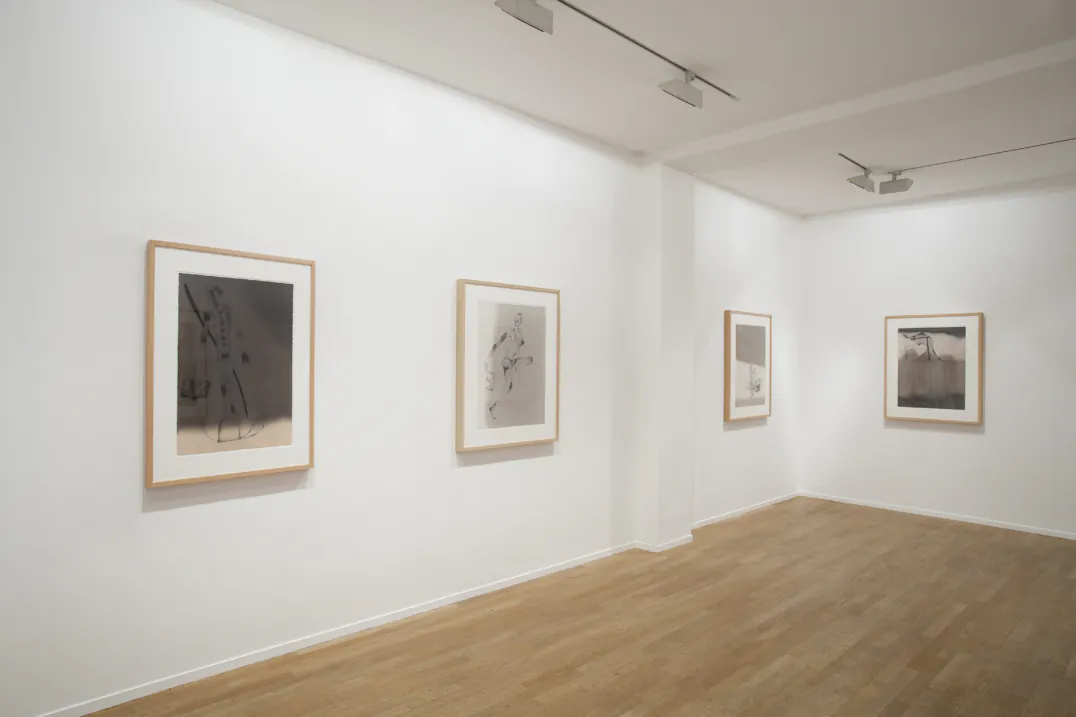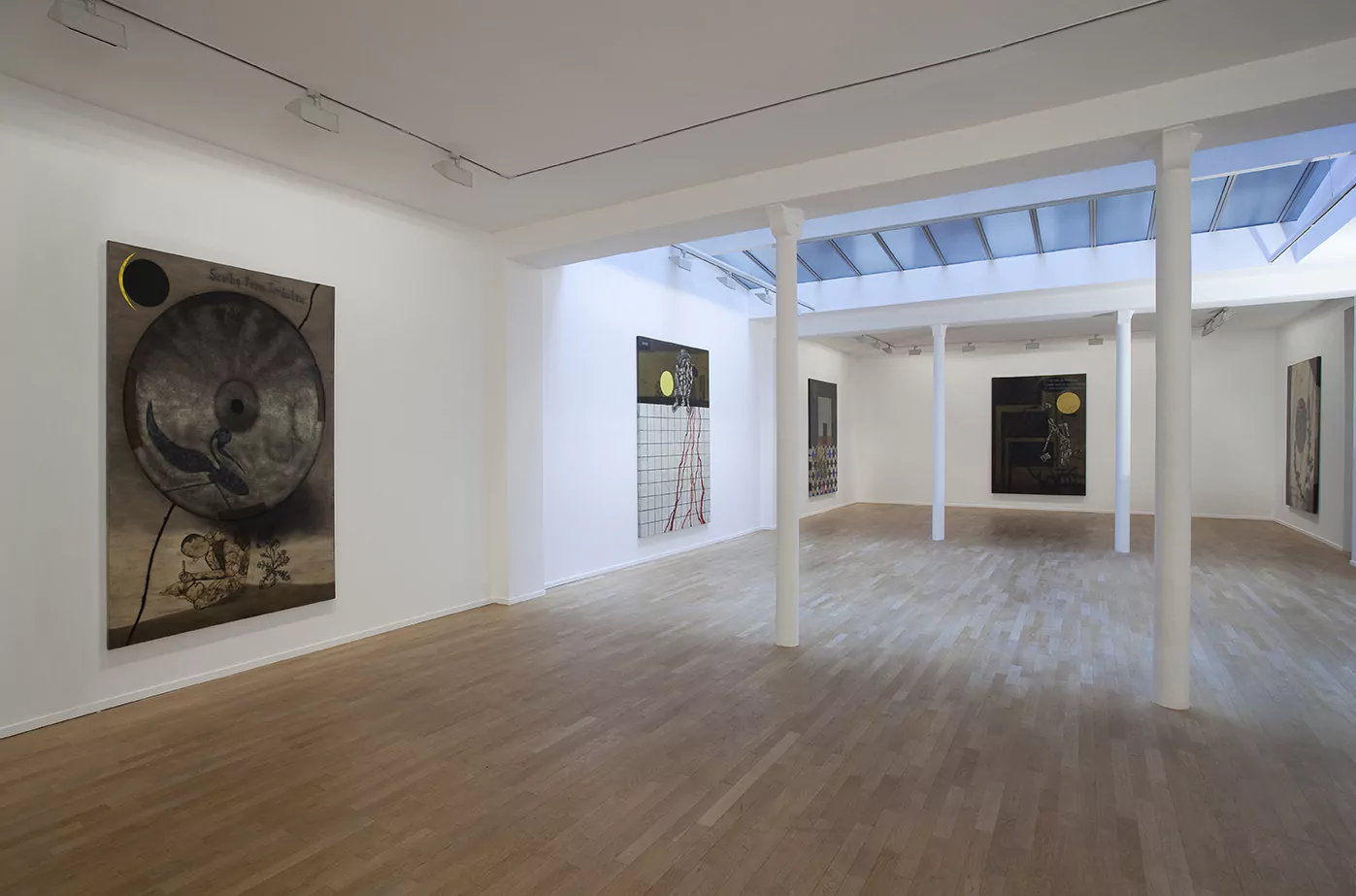
Atul Dodiya
Scribes from Timbuktu
Galerie Daniel Templon will be holding the first solo exhibition in France of Atul Dodiya, one of the pioneers of contemporary Indian art. The artist is unveiling his latest works, a series of oils on canvas and watercolours inspired by recent upheavals in Mali.
In Timbuktu, the legendary former centre of Malian learning, a number of scholars are courageously defending their cultural heritage against attacks by fundamentalists. Atul Dodiya’s new works pay homage to these scholars and their fight for freedom and the transmission of memory.
Skeletal silhouettes, cracked surfaces and traces of blood evoke the tragedy of the destruction suffered in Timbuktu. However, the poignant figures contrast with the joyful motifs featured in mosaics, Iranian calligraphy, Turkish tapestries and Malian fabrics. Atul Dodiya is celebrating the sunniest aspects of Islamic cultural traditions. Bathing in the light of a cosmic circle—moon, sun, globe, eye, bowl—we see examples of the author’s love of playing with quotations and amalgams. Each piece has an accompanying text featuring the words of French poets Philippe Soupault and Claude Royet Journoud.
Atul Dodiya, from the same generation as his renowned contemporaries Subodh Gupta and Sudarshan Shetty, was the first artist to create bridges between Western and Indian artistic traditions.
The experience gained during a one-year course at the Ecole Nationale Supérieure des Beaux-Arts in Paris during the early 1990s was key to his development. His works channel elements of Picabia, Godard, Malevitch and Munch as well as Bollywood. Popular culture sits alongside cinematic and literary references. Behind the lyricism and the humour, politics remains one of his core preoccupations.
With his dazzling capacity for self-reinvention, Atul Dodiya has worked in a comprehensive range of styles, eagerly embarking, always successfully, on new experiments, from his early photo-realism to his works on metal shutters that sealed his international reputation.This process of deliberation on the object itself reflects his interest in the aspirations of India’s middle classes and the impact of globalisation on their traditions.
Atul Dodiya was born in 1959. He lives and works in Mumbai. His works can be found in the collection of many museums and private foundations in India. Atul Dodiya has participated in most of the major exhibitions of Indian art held in the USA, Europe and Asia in recent years: Indian Summer at the Ecole nationale supérieure des Beaux Arts, Paris (2000), Inside India at the Palazzo Saluzzo Paesana, Turin (2010), The Empire Strikes Back at the Saatchi Gallery, London (2010), La Route de la soie at the Tri Postal, Lille (2011) and Paris Delhi Bombay at the Centre Pompidou, Paris (2011). He has also participated at the Documenta in Kassel in 2007, the Gwangju Biennale (curated by Okwui Enwezor) in 2008 and the Moscow Biennale (curated by Jean-Hubert Martin) in 2009. Summer 2012 sees his work exhibited as part of India: Art Now in Norway’s ARKEN museum.
The artist
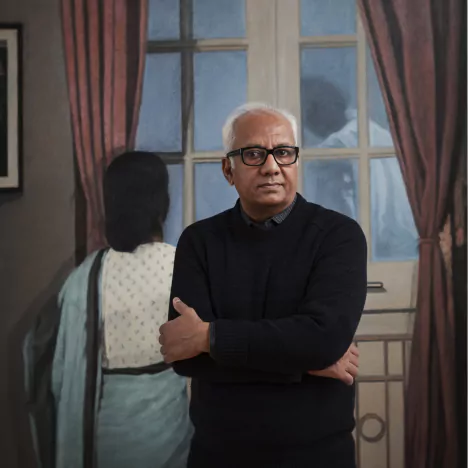
Atul Dodiya was born in 1959 in Mumbai where he lives and works. One of the pioneers of contemporary Indian art, he builds bridges between the history of Indian and Western art. His references to popular culture, cinema and literature point to an underlying political analysis of the aspirations of the Indian middle class and the impact of globalisation on their traditions. Atul Dodiya uses a broad spectrum of media, from his early photo-realism to the works on metal shutters that sealed his international reputation.
